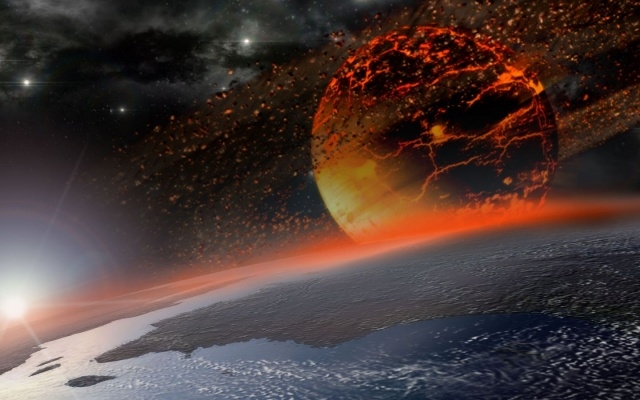Planetary collision made life possible on Earth, scientists say

Elements essential for life, likely including all of the carbon and nitrogen in our bodies, were introduced to our planet 4.4 billion years ago.
Petrologists - scientists studying the origin of rocks - believe Earth's essential volatile elements were introduced in a collision with another planet which we later subsumed.
Rajdeep Dasgupta, the study's co-author at Rice University in Texas, said: "From the study of primitive meteorites, scientists have long known that Earth and other rocky planets in the inner solar system are volatile-depleted.
"But the timing and mechanism of volatile delivery has been hotly debated. Ours is the first scenario that can explain the timing and delivery in a way that is consistent with all of the geochemical evidence."
Dr Gasgupta's laboratory, which specialises in studying geochemical reactions deep within planets under intense heat and pressure, provided the evidence for the research.
The study's lead author, graduate student Damanveer Grewal, gathered evidence to support the theory that Earth's volatile elements arrived through a collision with an embryonic planet that had a core rich with sulfur.
Source: SkyNews
Source: Elikem Adiku
Trending News

GITW 2025: Experts call for smarter approach to infrastructure development
10:53
EC considers rerun of Ablekuma North Parliamentary election
15:06
Gov't suspended Energy Levy to ease economic burden on citizens – Majority Leader
14:56
Ghana shouldn’t sleep’ – Henry Osei Akoto as he welcomes 24-Hour Economy
09:58
2024 Presidential election: Bawumia’s defeat widest in Ghana’s political history – Razak Kojo Opoku
14:48
Unionist cautions GRNMA President against politicising labour negotiations
14:45
Teachers urged to embrace STEM as tool for uncovering students’ talents
08:50
Packaged Water Producers urge gov't to suspend new excise tax on plastic packaging
14:10
Suspended Chief Justice a victim of her own actions -GFL boss
14:31
Defence Minister urges Parliamentary support for Armed Forces
08:14




